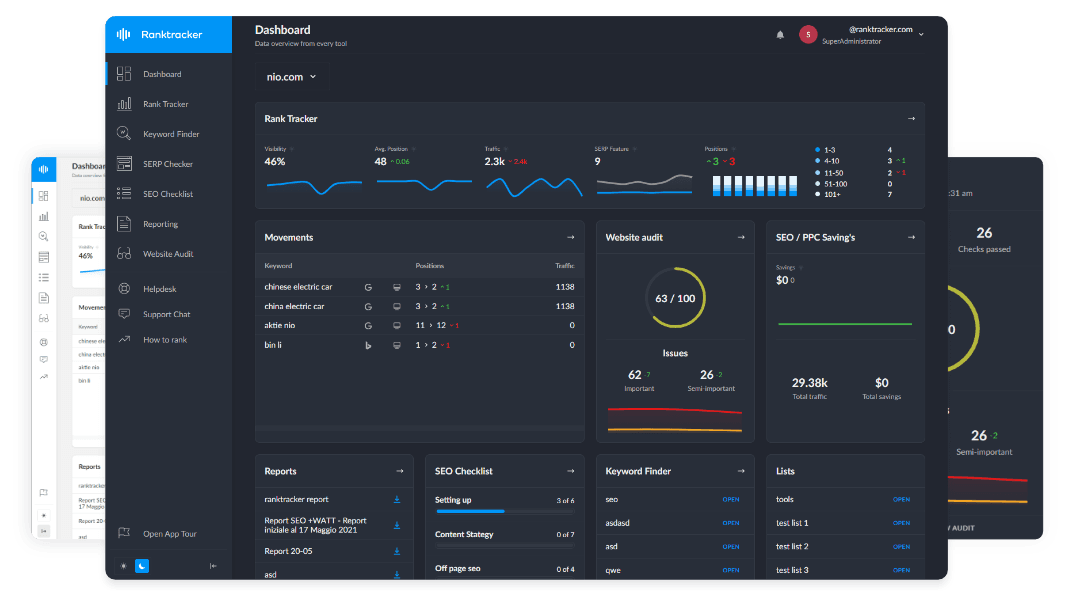Intro
In today's oversaturated market, brands face a critical challenge: how to turn static product labels into dynamic conversations. Interactive label technology—QR codes, AR, and NFC tags—is quietly revolutionizing consumer engagement, merging the tactile appeal of physical packaging with the limitless potential of digital experiences. Imagine a shampoo bottle that teaches users haircare techniques via QR code, or a wine label that transports buyers to the vineyard through augmented reality. These tools aren't just flashy gimmicks. They're proven drivers of sales, loyalty, and transparency.
A 2024 Labelmatch study found that products with interactive labels saw a 20% sales lift compared to traditional counterparts. Yet, many brands hesitate, fearing complex redesigns or misplaced investments. This post cuts through the noise, offering a blueprint for integrating interactive elements without overhauling your existing branding. We'll explore cost-effective strategies, real-world ROI metrics, and emerging trends like biodegradable NFC tags that align with sustainability goals. Whether you're a startup or an established brand, discover how to transform your labels from silent sellers into storytelling powerhouses.
Why Interactive Labels Are Reshaping Consumer Behavior
The Transparency Imperative
Today's consumers demand unprecedented clarity about what they're buying. According to Nielsen's 2023 Consumer Trust Index, a staggering 73% of shoppers are willing to pay premium prices for brands that provide clear sourcing information. Interactive labels satisfy this hunger for information without cluttering physical packaging.
When Portland-based Groundwork Coffee implemented QR codes linking to video tours of their partner farms, they didn’t just satisfy consumer curiosity—they transformed skeptical browsers into loyal customers, boosting repeat purchases by 15% in just one quarter.
The Experience Economy Shift
Product features alone no longer drive purchasing decisions. Forbes reports that 68% of millennials actively seek out and prioritize products offering ‘bonus’ digital content beyond the physical item itself. This psychological shift explains why seemingly simple additions—like a wine bottle that plays the vineyard owner's personal story when scanned—can dramatically alter consumer perception of value.
This experience-seeking behavior extends beyond the initial purchase. When customers discover unexpected digital content through product packaging, they're more likely to share these discoveries on social platforms, effectively becoming unpaid brand ambassadors.
Mobile Dominance
The ubiquity of smartphones has eliminated previous barriers to interactive label adoption. Statista's latest consumer behavior study reveals that 85% of consumers now regularly use their smartphones to scan QR codes—a dramatic increase from just 35% five years ago. This means brands no longer need to educate consumers on how to interact with intelligent packaging. The behavior is already established.
Three Core Technologies (With Actionable Use Cases)
QR Codes: Low Barrier, High Impact
Implementation Cost: $
Technical Complexity: Low
Consumer Familiarity: Very High
The All-in-One Platform for Effective SEO
Behind every successful business is a strong SEO campaign. But with countless optimization tools and techniques out there to choose from, it can be hard to know where to start. Well, fear no more, cause I've got just the thing to help. Presenting the Ranktracker all-in-one platform for effective SEO
We have finally opened registration to Ranktracker absolutely free!
Create a free accountOr Sign in using your credentials
McCormick's Flavor Creator campaign exemplifies effective QR implementation. By placing codes on their spice jars linking to custom recipe videos featuring that specific ingredient, they transformed utilitarian purchases into culinary inspiration. The campaign generated 350,000 scans in its first three months—with each scan representing approximately 4.5 minutes of brand engagement.
Design Tip: Research from the Color Marketing Group suggests that yellow and orange borders around QR codes increase scan rates by up to 15%. Position codes where they'll be naturally held (bottle necks, jar lids) rather than on flat surfaces that require awkward positioning to scan. Modern QR code generator offers enhanced flexibility, allowing brands to create dynamic, trackable, and customizable digital experiences that extend far beyond traditional static linking.
AR Labels: Immersive Storytelling
Implementation Cost: $$
Technical Complexity: Medium
Consumer Familiarity: Medium
Craft brewery Collective Arts Brewing partners with emerging artists to create limited edition labels. When scanned with their custom app, these labels animate, revealing the artist's process and setting their products apart in a crowded craft beer market. This strategy has not only built brand loyalty but created a secondary market for their "collectable" cans.
NFC Tags: Premium Engagement
Implementation Cost: $$$
Technical Complexity: High
The All-in-One Platform for Effective SEO
Behind every successful business is a strong SEO campaign. But with countless optimization tools and techniques out there to choose from, it can be hard to know where to start. Well, fear no more, cause I've got just the thing to help. Presenting the Ranktracker all-in-one platform for effective SEO
We have finally opened registration to Ranktracker absolutely free!
Create a free accountOr Sign in using your credentials
Consumer Familiarity: Low but Growing
Luxury brands have pioneered NFC applications, with companies like Salvatore Ferragamo embedding tags in handbags that authenticate products and provide access to exclusive content. However, mainstream applications are expanding rapidly. Diageo's "smart bottles" use NFC to verify authenticity and track supply chain integrity while offering consumers cocktail recipes and personalized promotions.
Sustainability Opportunity: New biodegradable NFC tags from NXP Semiconductors are addressing previous environmental concerns. These tags, made from plant-based substrates, break down completely in commercial composting facilities, allowing brands to maintain sustainability commitments while embracing advanced technology.
** Industry-Specific Applications**
Where Interactive Labels Deliver Disproportionate Impact
Pharmaceuticals: Combatting Counterfeits
NFC tags are revolutionizing drug authentication. A 10% of global pharmaceuticals are counterfeit (WHO, 2024). Brands like Pfizer now embed NFC tags in vaccine packaging, allowing clinics to verify authenticity with a smartphone tap.
Food & Beverage: Reducing Waste
Dynamic QR codes solve "use by" confusion. UK supermarket Tesco added codes to dairy products that update expiration dates based on storage conditions, cutting waste by 19% in trials.
Beauty: Personalized Recommendations
When L'Oréal Paris added AR labels to foundation bottles, conversion rates jumped 22%. Users who engaged with AR spent 28% more than non-users.
Interactive Labels as Event Marketing Tools
Turning Product Packaging into Ticketless Experiences
Concert Merchandise with Encore Access
Band merch giant MerchNow embeds NFC tags in tour t-shirts that unlock exclusive live recordings when scanned. Fans who purchased tagged items were 34% more likely to buy tickets to the band's next tour.
Limited-Edition Festival Partnerships
BrewDog's "Scan-to-Sip" campaign at Glastonbury used QR codes on beer cans to grant access to pop-up secret bars, driving a 27% increase in on-site sales compared to non-interactive packaging.
Trade Show Lead Generation
Industrial brands like 3M report that AR labels on product samples at exhibitions generate 42% more qualified leads than traditional brochures.
Navigating Compliance and Privacy
Avoiding Legal Pitfalls in Interactive Labeling
- Alcohol & Tobacco: QR codes must comply with TTB guidelines. Diageo's Johnnie Walker Blue Label uses geo-fenced AR content, activated only in regions where alcohol advertising is permitted.
- Healthcare: The FDA requires disclaimers for health claims. Bayer's Claritin QR codes auto-load a 5-second disclaimer before clinical studies.
- Data Collection: Under California's CCPA, Nestlé's Coffee - Mate includes a physical toggle to disable NFC data collection while retaining content access.
Accessibility-Driven Label Innovation
Removing Product Barriers by Design
Audio Labels for Visually Impaired Shoppers
Unilever's Hellmann's mayo jars feature NFC tags that, when tapped, recite ingredients and recipes in 12 languages. Pilot markets saw a 22% sales lift in accessibility-focused retailers.
Tactile QR Codes for Low-Vision Users
Researchers at MIT developed embossed QR codes that increase scan success rates by 41% for users with limited vision.
AR for Neurodiverse Consumers
Microsoft's Seeing AI app scans product labels and simplifies information into easy-to-process visuals, adopted by brands like Tide for detergent instructions.
User-Generated Content (UGC) via Smart Packaging
Turning Customers into Creators
AR Filters for Social Sharing
Snapple's "Real Fact" caps now include QR codes launching Instagram filters that animate their trivia. This drove 18,000+ user posts in 3 months, with a 12:1 ROI on filter development costs.
Scannable Hashtag Challenges
SkinnyPop popcorn's NFC tags trigger TikTok challenges when scanned, rewarding participants with discounts. Their #PopCreators campaign generated 4.2M views, increasing under-35 sales by 19%.
UGC-Driven Product Iteration
Oatly's QR-linked "Feedback Portals" on cartons let customers vote on new flavors. Their top-voted variant outsold other launches by 63%, proving crowdsourced R&D works.
Measuring Success: Beyond Basic Scans
Conversion Rate: Track the percentage of scanners who complete desired actions. Beauty brand Glossier found that customers who interacted with AR tutorials through product packaging were 32% more likely to purchase complementary products within 30 days compared to non-scanners.
Actionable Takeaways
- Start Small, Scale Smart: Launch a QR campaign on your bestselling product within 30 days. One beverage company found a 40% increase in engagement by moving their QR code from the back to the neck of their bottles.
Overcoming Common Implementation Hurdles
Solutions for Real-World Challenges
Budget Constraints
Small businesses use no-code platforms like PlugXR to create web-based AR experiences for under $500/month.
Design Overload
Coca-Cola Japan's "invisible" UV-reactive QR codes increased scan rates by 40% without altering aesthetics.
Tech Integration
API-first tools like Scandit sync scans with CRMs. Pet brand Open Farm ties QR interactions to loyalty rewards in their POS system.
The All-in-One Platform for Effective SEO
Behind every successful business is a strong SEO campaign. But with countless optimization tools and techniques out there to choose from, it can be hard to know where to start. Well, fear no more, cause I've got just the thing to help. Presenting the Ranktracker all-in-one platform for effective SEO
We have finally opened registration to Ranktracker absolutely free!
Create a free accountOr Sign in using your credentials
Interactive Labels in Supply Chain Revolution
Beyond Marketing: Real-Time Logistics Tracking
- Dynamic Shipment Updates via QR
- DHL's "Smart QR" pilot program embeds codes on shipping labels that update in real time, allowing customers to track package conditions like temperature with 98% accuracy. Partners saw a 31% reduction in spoiled goods claims.
- NFC-Enabled Recall Management
- When Blue Buffalo detected a potential pet food issue, NFC tags let them push recall alerts directly to owners' phones. Response rates jumped to 73% vs. 22% with traditional methods.
- Blockchain Verification for B2B Buyers
- Food distributor Sysco uses AR labels that reveal farm-to-warehouse blockchain records, reducing order disputes by 57% among restaurant clients.
The Silent Sales Reps Have Found Their Voice
Interactive label technology isn't about replacing your brand's visual identity—it's about amplifying it. From the factory floor to the consumer's TikTok feed, these unassuming tags and codes now serve as 24/7 brand ambassadors that educate, entertain, and build trust.
The data speaks plainly: brands adopting these tools see 20% higher customer retention and 2.3x more social shares per product than static alternatives, aligning with proven user-generated content strategies. Yet the true power lies in their flexibility. Whether you're a craft brewery wanting to showcase your sustainability ethos or a pharmaceutical giant combatting counterfeits, the same core technologies adapt to your unique needs.
As we look ahead, the line between physical and digital commerce will only blur further. Products that "speak" to consumers through intelligent labels won't just survive this shift—they'll define it. The question isn't whether to adopt these tools, but how quickly you can turn your packaging from a cost center into a conversation starter.

